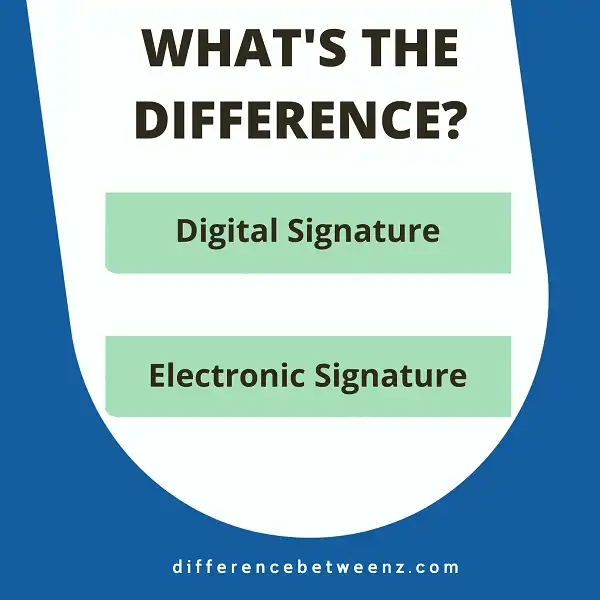What’s the difference between a digital signature and an electronic signature? You may be surprised to learn that they’re not actually the same thing! In this blog post, we’ll take a closer look at these two types of signatures and explain what makes them different. Stay tuned!
What is Digital Signature?
A digital signature is an electronic equivalent of a handwritten signature. It is used to authenticate the identity of the sender of a message or the signer of a document, and to ensure that the original content of the message or document is unchanged.
- Digital signatures are based on public key cryptography, which uses a pair of mathematically-related keys – a private key known only to the signer, and a public key that anyone can use to verify the signature.
- When a document is signed with a digital signature, a mathematical algorithm is used to generate a unique code that is then encrypted with the signer’s private key.
- This code, known as a hash, can be decrypted using the signer’s public key. Anyone with access to the signer’s public key can decrypt the hash and verify that it matches the content of the document.
If even one character in the document has been changed, the hash will no longer match and the signature will be invalidated. In this way, digital signatures can ensure both the authenticity and integrity of electronic documents.
What is Electronic Signature?
- Electronic signatures, also known as e-signatures, are a type of technology that allows users to sign documents electronically. This can be done in person or online, and the signatures are legally binding in most countries.
- There are many benefits to using electronic signatures, including convenience, speed, and security. For example, when signing a contract electronically, both parties can do so from anywhere in the world at any time.
- This is much faster and more convenient than traditional methods, such as mailing or faxing documents back and forth. In addition, electronic signatures are more secure than handwritten signatures, as they cannot be forged or tampered with. As a result, electronic signatures are becoming increasingly popular for a wide range of purposes.
Difference between Digital Signature and Electronic Signature
In short, digital signatures are more secure than electronic signatures.
- Digital signatures use cryptographic algorithms to generate a unique signature that can be verified by anyone with the appropriate software.
- Electronic signatures, on the other hand, are simply typed names or initials that are attached to a document.
- While electronic signatures are legally binding in many countries, they can be forged relatively easily.
- Digital signatures, on the other hand, are much harder to fake since they require access to the signer’s private key.
As a result, digital signatures offer a higher level of security and are typically used for sensitive documents such as contracts and financial transactions.
Conclusion
The main difference between a digital signature and an electronic signature is that a digital signature must be attached to or embedded in the document being signed, while an electronic signature can be attached to or embedded in the document, or it can exist as a separate file. In terms of security, both are equally strong since they use encryption technology. However, if you need to enforce certain legal requirements for your documents, then you may want to consider using a digital signature rather than an electronic signature.


